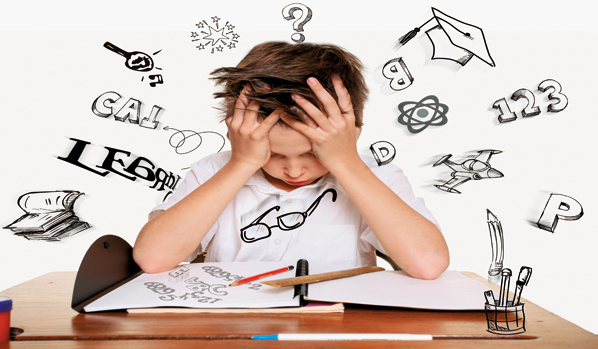
Kids struggle with reading for a variety of reasons, from difficulties with processing to attention issues like ADHD that prevent a child from truly focusing on the task at hand. Understanding which issue is triggering the difficulty can help you come up with strategies that help the struggling reader succeed and make the most of their abilities.
If you suspect that a disability like dyslexia is involved, it is important to encourage the child’s family to seek out an evaluation by a professional. If diagnosed, specific strategies designed to help people with this condition can be incorporated into your teaching and routine. Since dyslexia impacts performance in a variety of ways, a reader with this condition may not improve with the strategies you’d typically use.
Learning more about dyslexia can help you to aid a struggling reader in the classroom and at home.
What is Dyslexia?
More than just a simple reversal of letters or numbers, dyslexia is a brain based issue that causes a child to wrestle with spelling, writing, reading and even speaking. With this condition, students strain to process or identify some types of information, from identifying letter sounds or the actual symbols to understanding blends and comprehending what they are reading.
Dyslexia can’t be outgrown or cured, but accommodations can be made via an IEP (individualized education plan) to help students with this condition. Some states have laws designed to protect students with dyslexia that offer more than the Federal IDEA law and can be used to assist students diagnosed with this learning disability.
Signs of Dyslexia
- The most well-known symptom is letter reversal
- Above-average difficulty pairing letters with sounds or matching sounds to letters
- Switching beginning sounds when pronouncing words or phrases, like using “mawn lower” in place of “lawn mower” in conversation
- Trouble reading aloud or grouping phrases or words
- Inability or difficulty with sounding out new words
- Difficulties with handwriting or getting letters in the wrong order when writing
- Trouble with rhymes and rhyming words
Learning How to Read vs Dyslexia
A child who is wrestling with a new concept or process will likely learn it eventually; a child with dyslexia may not unless strategies designed to particularly target that condition are used. As a child with dyslexia works and struggles to process and comprehend words, his inability to pair letters with sounds or sounds with letters stands in the way of improvement.
Getting Help for a Struggling Reader
One of the most difficult things about helping readers is determining which kids are simply in the process of discovering new concepts and/or finding their best learning style and which children are actually coping with a disability or condition that impacts the way that they learn.
Providing support for a developing reader is an ideal first step, with strategies designed to engage and help a new reader “get it”. Simple changes like reading aloud each day and incorporating a research-based tool such as the See-N-Read® reading strip to isolate specific text without hiding the rest of the passage can help the developing reader succeed and may have a positive impact on the child with dyslexia.
If traditional, tried and true strategies are simply not working and the child is working hard but making little progress, it may be time to look at the possibility of a learning disability like dyslexia. Diagnosis of a condition like this will not only make it easier for the child to learn in a supportive environment, it will provide key protections and opportunities under IDEA and any dyslexia-specific state laws.
Understanding the signs of dyslexia and why some kids cannot improve without specific strategies and intervention can enable teachers to help struggling readers succeed. Learning more about “invisible” disabilities like dyslexia provides teachers with more tools to ensure success and help those students who are struggling with reading to succeed.
